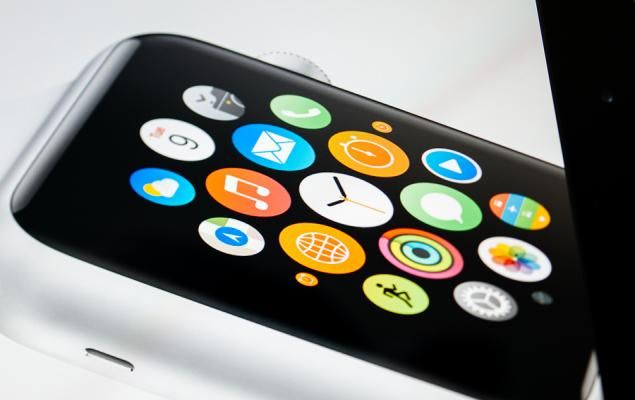
The coronavirus-triggered lockdown has spanned over weeks now. The deadly virus continues to cast a shadow despite stringent social-distancing measures. This is why technology giants around the world are looking for solutions that will allow the general public to go with the flow.
From self-testing solutions to contact-tracing applications, technology is being implemented to find a feasible way for adapting to changes in the surrounding and coping with the pandemic situation. After all, physical-distancing measures aren’t a permanent answer to a disease, duration of which is unknown.
In addition, although antiviral treatments are being tried out fast, a definitive solution to cure the disease is yet to be found. This leaves little option to bring the lockdown to a close, apart from smartphone applications that may help temper the crisis.
After all, as President Donald Trump plans to reopen the United States in three phases, the contact-tracing applications can prove to be highly beneficial. Let’s thus dive deeper into the technologies that may aid in gradually restarting economies again.
<p class="canvas-atom canvas-text Mb(1.0em) Mb(0)–sm Mt(0.8em)–sm" type="text" content="Self-Testing and Contact-Tracing: Need of the Hour” data-reactid=”23″>Self-Testing and Contact-Tracing: Need of the Hour
Apple Inc. AAPL and Alphabet Inc. GOOGL recently partnered on a contact-tracing application in a bid to fight the coronavirus. Both companies are working on a new set of tools that will allow mobile devices to exchange information via Bluetooth connections. The application will alert people when they are in close proximity to anyone with reported symptoms of the virus or who is already tested positive.
A key benefit of this application is that it will warn people when they are in contact with an asymptomatic COVID-19 positive person. This particular feature can caution people to stay alert and thus significantly lower the chances of getting infected.
Apple and Alphabet plan to launch the application program interface (API) of this application in May. The API will make it easier for other companies and countries that intend to develop contact-tracing applications.
Essentially, the interface will allow Apple and Android phones to interact with one another. Following this, Bluetooth-based contact tracing will then be built into each phone’s operating system. The interface is expected to be easily accessed and equipped with rich features, which will attract more end-users because of its simplistic but robust design.
However, there are certain factors that could give the contact tracing application a hard time. For example, the first step for this application to work will be self-testing solutions or simply put, the availability of mass testing, which is a matter of concern.Self-testing solutions are being rapidly developed right now in a bid to make diagnosis better for the masses.
<p class="canvas-atom canvas-text Mb(1.0em) Mb(0)–sm Mt(0.8em)–sm" type="text" content="French therapeutic solutions provider Sanofi SNY and California-based technology start-up Luminostics came together to offer a smartphone-based self-testing solution for the virus. The testing solution will bring Sanofi's clinical research testing experience and capabilities and Luminostics’ proprietary technology for consumer diagnostics for COVID-19 testing to the table, according toThe New York Times.” data-reactid=”29″>French therapeutic solutions provider Sanofi SNY and California-based technology start-up Luminostics came together to offer a smartphone-based self-testing solution for the virus. The testing solution will bring Sanofi’s clinical research testing experience and capabilities and Luminostics’ proprietary technology for consumer diagnostics for COVID-19 testing to the table, according toThe New York Times.
Notably, people with COVID-19 symptoms will require reporting their details. This could be an issue because some people might complain of fake symptoms and those actually suffering the virus may not report at all in fear of being confined or prohibited from public places.
The biggest example of this phenomenon is Singapore’s TraceTogether app, released in March. Just one in six Singaporeans downloaded the application, leaving behind a vast populace untraced and in the dark. Design flaws in the application also made it difficult for end-users but minimal awareness among the masses is the main disadvantage for this application’s paucity of users.
Finally, Bluetooth contact tracing systems are effective only when the vast majority of people in a certain region download the application, keep their phone’s Bluetooth on at all times and report their symptoms in the right manner. Apple and Alphabet’s efforts imperatively rely on these three factors. The contact-tracing applications may actually put an end to the lockdown, provided these factors are in place.
<p class="canvas-atom canvas-text Mb(1.0em) Mb(0)–sm Mt(0.8em)–sm" type="text" content="While Sanofi carries a Zacks Rank #2 (Buy), Apple has a Zacks Rank #3 (Hold). You can see the complete list of today’s Zacks #1 (Strong Buy) Rank stocks here.” data-reactid=”33″>While Sanofi carries a Zacks Rank #2 (Buy), Apple has a Zacks Rank #3 (Hold). You can see the complete list of today’s Zacks #1 (Strong Buy) Rank stocks here.








